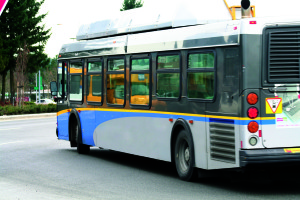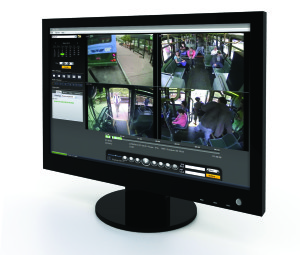With the increased number of crimes on transit vehicles, protection of bus operators from violence has become one of the top priorities for transit agencies. Assaults cause physical injuries and an increased level of stress for the driver, as well as have a financial impact on the transit system in terms of lost work hours, medical claims, employee absenteeism, and lawsuits. Although the list below is not exhaustive, it presents some of the most efficient strategies to prevent or stop volatile situations on board. And though some of the solutions require an up-front investment, the return on them might greatly surpass the expenditures.

- Video and Audio Surveillance
Statistics show that the installation of video and audio surveillance equipment on buses is considered to be the most effective measure in the prevention of operator assaults. By choosing cameras with high image quality, and placing them strategically around the bus, transit authorities can capture everything that happens on the route. Newer digital video recorders (DVRs) with sufficient recording capacity can capture several weeks’ worth of bus activities and offer simplified tracking, viewing, and video archiving capabilities. The most advanced equipment also allows remote access to the camera system to stream live video. This technology can help prevent a volatile situation from happening or can alert law enforcement of a problem and dispatch help to the vehicle in case of an incident.
As Halifax Transit Security Manager Doug Mosher notes, “Bus cameras provide added safety for drivers and passengers; the systems are a huge deterrent for criminal activity on buses”. Sometimes even seeing a camera can stop an attack.
In addition, video monitoring helps in the investigation of violent events on the bus. For example in 2013, three young passengers started a verbal dispute which turned into a physical fight with shooting on a Metro Transit bus in Dartmouth, Nova Scotia. The vehicle was equipped with cameras and as police representatives noted, “the video on the bus was instrumental in allowing us to identify who these persons were and arresting them as quickly as we could.” (Read more about the accident)
- Installation of Barriers
Attacks on drivers often begin with confrontations over the non-payment of a transit fare. Barriers partially shield the operator from passengers and serve as an immediate protection in case of attack. This type of shielding is widely used in European countries and it’s gaining more and more popularity in the US and Canada. For example, TransLink is undertaking a pilot project in Metro Vancouver to install bus driver barrier shields on a number of bus vehicles towards the end of this year.
- Provision of Self-defense Tools
In some cases drivers might need special tools for an immediate defense from a sudden assault. Depending on the legislation in a certain area, bus operators, especially those working late hours or in problem neighborhoods, might be allowed to have pepper sprays or pepper gels on-board. In Canada these tools are classified as a prohibited weapon, but in certain states in the United States they might be provided after a specific training. It’s also recommended to have cameras on board to prove the necessity of pepper spray usage.
Another efficient tool is having an emergency alarm button on board that allows the driver to call for assistance. This feature can be integrated with the mobile surveillance system to simplify the retrieval of the recording and to identify the exact location of the incident.
- Self-Defense Training
Transit drivers will feel safer at work if they learn different techniques to defend themselves in case of an attack. It should be mentioned though, that such training can subject the agency to civil or criminal liability, so it is important to have a trainer with a law enforcement background (for example, a police officer).
The defense is based on a few principles:
1) The operator is usually in the seated position and the assailant can only reach him from one side;
2) From such a specific angle it’s harder to knock the operator who also has emergency alarm tools.
Such training can include a practical course, video and audio materials, handouts, quizzes, and tests.
- Customer Service Training
Very often a conflict on board might be avoided if the driver knows how to recognize the signs of an assault or a volatile situation and makes an effort to prevent it. Sometimes just maintaining a professional demeanor and staying calm is sufficient enough for stopping a hostile customer, in other cases it’s better to use some special techniques to defuse a potential assault. A comprehensive training program may include instructions and videos, discussions of various dangerous scenarios and courses of actions to be taken, provision of handbooks and bus rules of conduct, specific communication techniques, and other methods.
Want to learn more about transit safety and bus operators’ protection? Join Seon’s campaign to Stop Violence Against Drivers and sign up for weekly tips on how to reduce the risk to your workforce and your organization.
Vlada Terenina
Marketing Coordinator | Seon
vlada.terenina@seon.com


